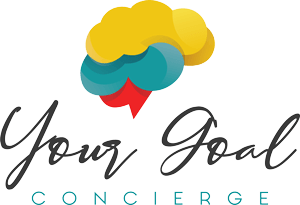Signs to Consider a Chief Operating Officer (COO)
Erica Kesse

Running a successful business is a multifaceted endeavor that requires careful planning, efficient operations, and effective leadership. As your company grows, the demands on your time and energy also increase. One crucial decision many entrepreneurs face is when to bring in a Chief Operating Officer (COO) to help manage the day-to-day operations. But how do you know when it's the right time to consider hiring a COO? In this blog post, we'll discuss some signs that might indicate it's time to bring in a COO to your organization.
Feeling Irritable
If you find yourself becoming increasingly irritable or short-tempered at work, it may be a sign that you're stretched too thin. As a business owner, it's common to feel passionate about your company's success, but when the weight of daily operations becomes too burdensome, it can take a toll on your emotional well-being.
Unable to Get a Good Night's Sleep
A lack of quality sleep can be a telltale sign that your workload is overwhelming. Constantly worrying about various aspects of your business can disrupt your sleep patterns, leading to fatigue and decreased productivity.
Easily Overwhelmed
Running a business often involves juggling numerous tasks and responsibilities simultaneously. If you find yourself constantly overwhelmed and unable to focus on high-level strategic thinking, it might be time to delegate some of these responsibilities to a COO.
Procrastinating A Lot
Procrastination can be a manifestation of feeling overwhelmed. When you have too much on your plate, it's easy to put off important tasks. A COO can help you stay on track by handling operational details, allowing you to concentrate on more critical aspects of your business.
Frequent Headaches
Stress and tension often manifest physically, and frequent headaches can be a symptom of this. The constant pressure of managing all aspects of your business can lead to chronic stress, which can affect your overall health.
Feeling Drained or Tired All the Time
If you're consistently feeling drained or tired, it could be a sign of excessive workload and stress. Running a business can be demanding, but it shouldn't leave you perpetually exhausted. A COO can help alleviate some of this burden.
Loss of Motivation
If you've noticed a significant decline in your motivation and enthusiasm for your business, it might be because you're stuck in the minutiae of daily operations. A COO can help reinvigorate your passion by taking over the routine tasks and allowing you to focus on your vision and goals.
Struggle with Self-Doubt
As a business owner, self-doubt can creep in when you're spread too thin and questioning your ability to effectively manage all aspects of your company. A COO can provide the expertise and support needed to boost your confidence and help you make informed decisions.
Recognizing these signs is the first step in determining whether it's time to hire a Chief Operating Officer for your business. A COO can be a valuable addition to your team, allowing you to regain your focus, reduce stress, and improve your overall well-being. By delegating operational responsibilities to a capable professional, you can free up your time to concentrate on strategic growth and innovation, ultimately leading your business to new heights of success. If you identify with any of these signs, it may be time to consider the benefits a COO can bring to your organization.
Book some time with us to Try on COO. We will be happy to let you get a taste of how we can bring you relief plus check out our Service: Comprehensive Virtual Services.



